This list includes 30 Mammals that start with V, from “Common Vampire Bat” to “Voss’s Rice Rat”. These mammals vary from bats and rodents to small carnivores and ungulates, and they occupy global habitats. This list helps students, educators, wildlife enthusiasts, and content creators find quick scientific facts and habitat notes.
Mammals that start with V are species whose common English names begin with the letter V. One notable example is the Common Vampire Bat, long known in literature and folklore for its blood-feeding behavior.
Below you’ll find the table with Common name, Scientific name, Order, Habitat.
Common name: The everyday English name you will see, useful for quick identification and public-facing content.
Scientific name: The accepted Latin binomial that gives precise species identity and helps you find authoritative taxonomic details.
Order: The higher taxonomic group showing evolutionary relationships, which helps you place species among broader mammal groups.
Habitat: A concise description of typical environments where the species lives, so you can match species to ecosystems.
Mammals that start with V
| Common name | Scientific name | Order | Habitat |
|---|---|---|---|
| Vaquita | Phocoena sinus | Cetacea | Marine |
| Vampire Bat, Common | Desmodus rotundus | Chiroptera | Forest, cave, arid |
| Vancouver Island Marmot | Marmota vancouverensis | Rodentia | Tundra, forest |
| Vervet Monkey | Chlorocebus pygerythrus | Primates | Savanna, forest |
| Vicuña | Vicugna vicugna | Artiodactyla | Grassland, alpine |
| Virginia Opossum | Didelphis virginiana | Didelphimorphia | Forest, urban, wetland |
| Visayan Warty Pig | Sus cebifrons | Artiodactyla | Forest |
| Viscacha, Plains | Lagostomus maximus | Rodentia | Grassland |
| Vole, European Water | Arvicola amphibius | Rodentia | Freshwater, wetland |
| Volcano Rabbit | Romerolagus diazi | Lagomorpha | Grassland, forest |
| Vampire Bat, Hairy-legged | Diphylla ecaudata | Chiroptera | Forest, cave |
| Vampire Bat, White-winged | Diaemus youngi | Chiroptera | Forest, cave |
| Van Sung’s Langur | Trachypithecus vungsunensis | Primates | Forest, cave |
| Verreaux’s Sifaka | Propithecus verreauxi | Primates | Forest, arid |
| Venezuelan Red Howler | Alouatta seniculus | Primates | Forest |
| Vietnamese Mouse-deer | Tragulus versicolor | Artiodactyla | Forest |
| Visayan Spotted Deer | Rusa alfredi | Artiodactyla | Forest, grassland |
| Viscacha, Southern Mountain | Lagidium viscacia | Rodentia | Alpine, rock |
| Vlei Rat, Southern | Otomys irroratus | Rodentia | Grassland, wetland |
| Vole, Bank | Clethrionomys glareolus | Rodentia | Forest, grassland |
| Vole, Meadow | Microtus pennsylvanicus | Rodentia | Grassland, wetland |
| Vole, Tundra | Microtus oeconomus | Rodentia | Tundra, wetland |
| Vole, Woodland | Microtus pinetorum | Rodentia | Forest |
| Volcano Harvest Mouse | Reithrodontomys chrysopsis | Rodentia | Alpine, grassland |
| Velvety Free-tailed Bat | Molossus molossus | Chiroptera | Forest, urban, desert |
| Vesper Bat, Little Forest | Vespadelus vulturnus | Chiroptera | Forest, urban |
| Visored Bat | Sphaeronycteris toxophyllum | Chiroptera | Forest |
| Voss’s Rice Rat | Nephelomys vossi | Rodentia | Forest |
| Vordermann’s Pipistrelle | Hypsugo vordermanni | Chiroptera | Forest, wetland |
| Verreaux’s Bush Squirrel | Paraxerus verreauxii | Rodentia | Forest, savanna |
Descriptions

Vaquita
A tiny, critically endangered porpoise found only in the northern Gulf of California, Mexico. It is the world’s rarest marine mammal, with fewer than 10 individuals remaining, threatened by illegal fishing gear.

Vampire Bat, Common
Famous for feeding exclusively on blood, this small bat uses sharp incisors to make a small cut on sleeping animals. Found from Mexico to Argentina, its saliva contains an anticoagulant to keep blood flowing.
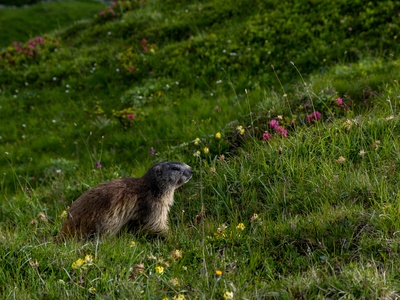
Vancouver Island Marmot
One of the world’s rarest mammals, this large, social ground squirrel is found only in the high mountains of Vancouver Island, Canada. Conservation efforts are underway to save it from extinction.
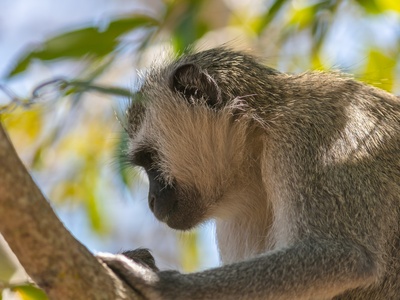
Vervet Monkey
A common monkey in eastern and southern Africa, recognizable by its black face and grayish body. Vervets are highly social, living in groups of up to 50, and have distinct alarm calls for different predators.

Vicuña
A wild relative of the alpaca, living in the high Andes mountains. It produces extremely fine, valuable wool. Vicuñas were once endangered but have recovered thanks to strong conservation programs.
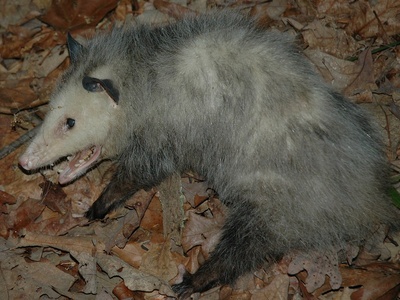
Virginia Opossum
North America’s only marsupial, famous for “playing possum” by feigning death when threatened. This highly adaptable omnivore has a prehensile tail and a pouch for carrying its young.

Visayan Warty Pig
A critically endangered pig native to a few islands in the central Philippines. Males are known for the three pairs of fleshy “warts” on their faces, which become more prominent during the breeding season.
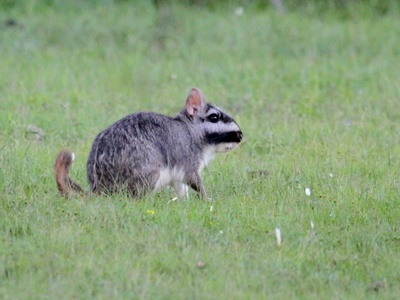
Viscacha, Plains
A large, social rodent from the pampas of South America, related to chinchillas. They live in extensive burrow systems called “viscacheras” and are known for their distinctive black-and-white facial markings.
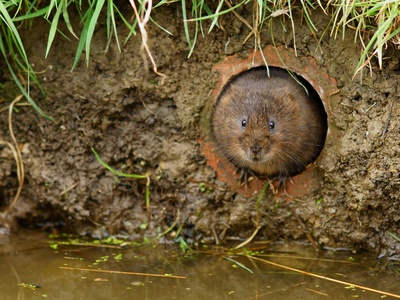
Vole, European Water
A large vole from Europe and Asia, famously known as “Ratty” in *The Wind in the Willows*. It lives along rivers and streams, burrowing into the banks and feeding on waterside vegetation.

Volcano Rabbit
One of the world’s smallest rabbits, found only on the slopes of four volcanoes in central Mexico. This endangered species is unique for its short, rounded ears and for emitting high-pitched calls like a pika.

Vampire Bat, Hairy-legged
A rare vampire bat from Central and South America. Unlike the common vampire bat that prefers mammal blood, this species specializes in feeding on the blood of birds, often perching on their legs.
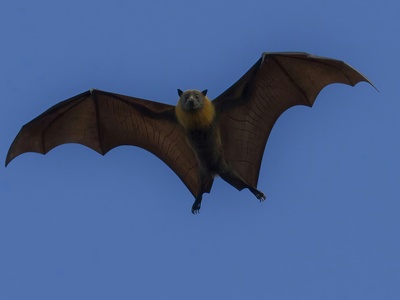
Vampire Bat, White-winged
The third species of vampire bat, also feeding primarily on bird blood. It is named for the distinct white edges on its wings and is found from Mexico to northern Argentina, though it is not commonly seen.
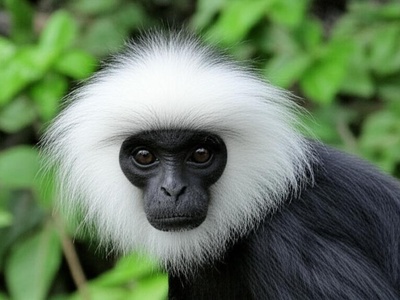
Van Sung’s Langur
A critically endangered leaf-eating monkey discovered in the 21st century, found only in a small limestone forest area of northern Vietnam. It faces extreme threats from habitat loss and hunting.

Verreaux’s Sifaka
A type of lemur from Madagascar, famous for its unique sideways leaping or “dancing” locomotion on the ground. It has soft, primarily white fur with dark patches on its head, and lives in small family groups.
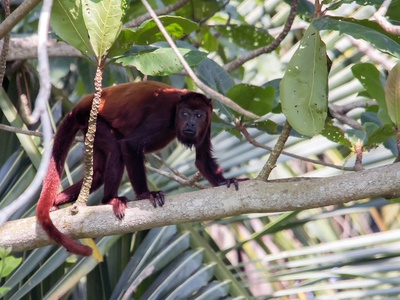
Venezuelan Red Howler
A large monkey from the northern Amazon basin, renowned for its incredibly loud calls or “howls.” These vocalizations, used to mark territory, can travel for several kilometers through the dense rainforest.

Vietnamese Mouse-deer
A tiny, deer-like mammal, also known as the silver-backed chevrotain. Long thought to be extinct, it was rediscovered in 2019 in Vietnam. It is one of the smallest hoofed animals in the world.
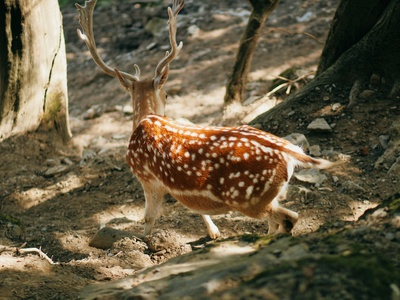
Visayan Spotted Deer
One of the rarest deer in the world, native to the Visayan Islands of the Philippines. It retains its yellowish-white spots into adulthood, a trait lost in most deer species. It is critically endangered.

Viscacha, Southern Mountain
A chinchilla relative living in rocky, high-altitude environments in the Andes. Known for its long ears and bushy tail, it is often seen sunbathing on rocks during the day to conserve energy.
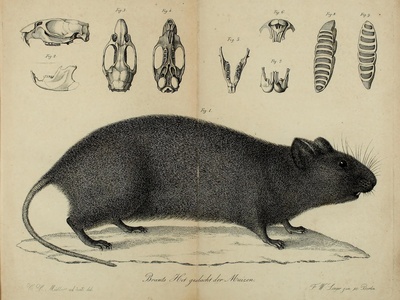
Vlei Rat, Southern
A medium-sized rat from southern Africa that inhabits marshes, swamps (“vleis”), and damp grasslands. It creates distinctive runways through vegetation and feeds primarily on grasses and reeds.

Vole, Bank
A common small vole found throughout Europe and parts of Asia. It has reddish-brown fur and is an adaptable omnivore, feeding on seeds, roots, and insects in woodland and hedgerow habitats.
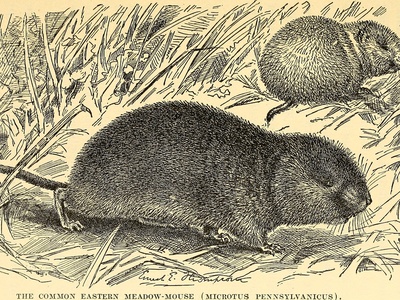
Vole, Meadow
One of the most common and widespread mammals in North America. This prolific vole is a key food source for many predators and is known for creating extensive runway systems under grass and snow.

Vole, Tundra
A hardy vole adapted to cold northern climates, with a distribution spanning from Scandinavia across Siberia to Alaska and Canada. It is a vital prey species for arctic predators like foxes, owls, and weasels.
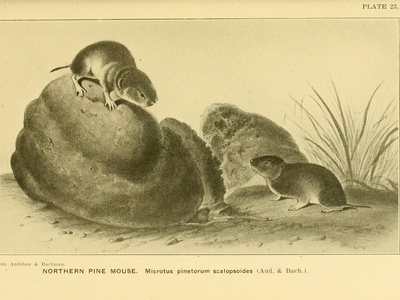
Vole, Woodland
A small, secretive vole of eastern North America that spends most of its life underground in burrows. It has soft, reddish-brown fur, a short tail, and tiny eyes and ears adapted for a subterranean lifestyle.
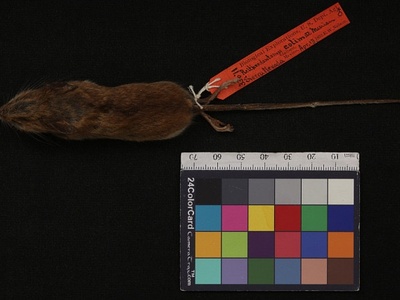
Volcano Harvest Mouse
A tiny mouse living at very high elevations on the volcanic peaks of central Mexico. It is well-adapted to the cold, harsh environment, often nesting in rocky crevices or under bunchgrass.

Velvety Free-tailed Bat
A widespread insect-eating bat found from the southern US to Argentina. It often roosts in large colonies in man-made structures and is one of the first bats to emerge in the evening to hunt.
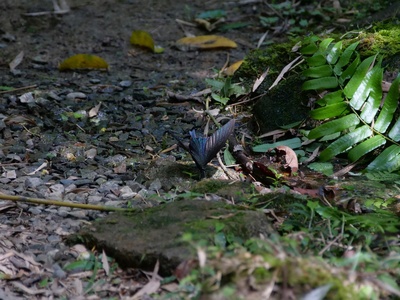
Vesper Bat, Little Forest
A very small bat from southeastern Australia, weighing only 3 to 6 grams. It is a highly maneuverable flyer that hunts for tiny insects below the forest canopy and often roosts in tree hollows.
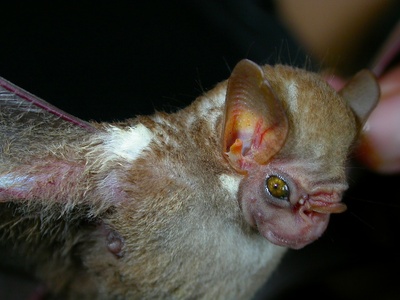
Visored Bat
A bizarre-looking, rare fruit bat from northern South America. It has a distinctive fleshy “visor” or nose-leaf, large eyes, and a white stripe down its face. Its natural history is poorly known.

Voss’s Rice Rat
A species of rodent from the cloud forests of the Ecuadorian Andes, first described in 2005. Like other rice rats, it is a ground-dwelling omnivore in its remote, high-altitude habitat.

Vordermann’s Pipistrelle
A small bat found in coastal mangroves and wetlands of Borneo and nearby islands. It is poorly known and considered vulnerable due to severe habitat loss from coastal development and aquaculture.
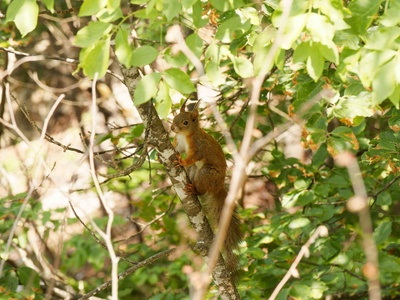
Verreaux’s Bush Squirrel
A squirrel species found in the forests and woodlands of Central and Southern Africa. It is an agile climber, feeding on nuts, fruits, and insects, and is known for its reddish belly and striped face.


